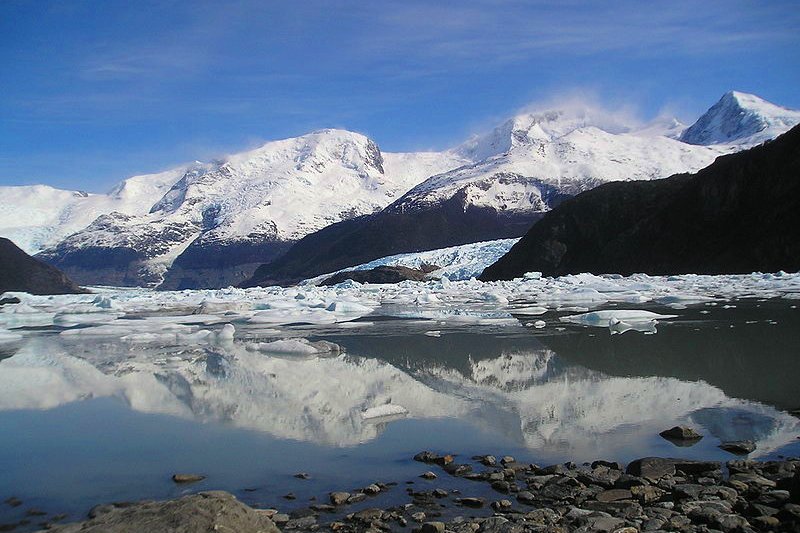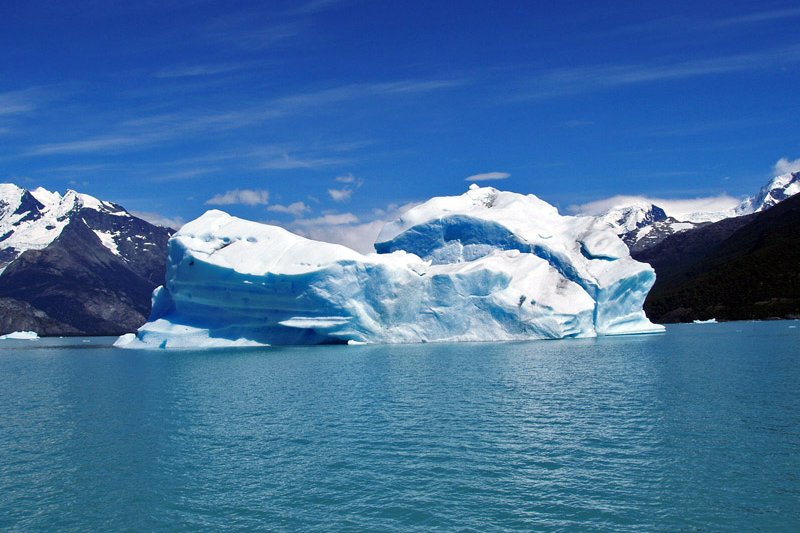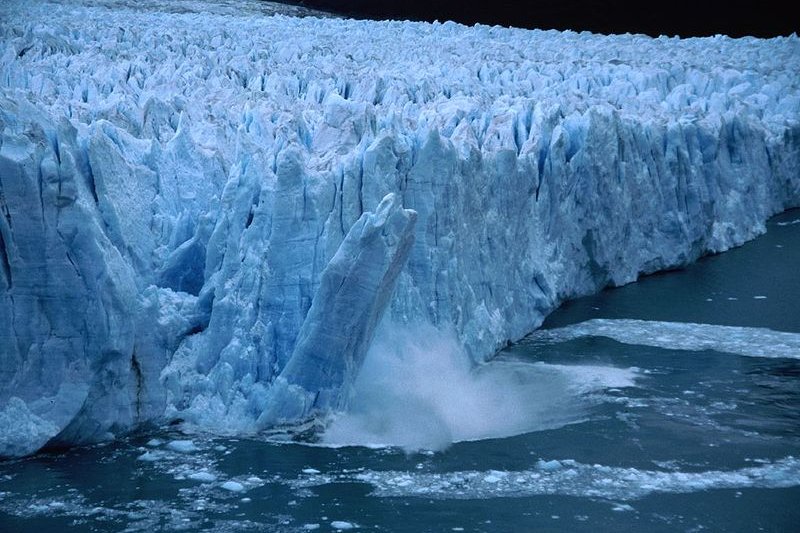 Laguna Oneli, a still lagoon with icebergs at Los Glaciares National Park, with snow-capped peaks in the background
Laguna Oneli, a still lagoon with icebergs at Los Glaciares National Park, with snow-capped peaks in the backgroundSource: https://commons.wikimedia.org/wiki/File:LagunaOneli3.jpg
Author: Heretiq

Los Glaciares National Park, or Parque Nacional Los Glaciares, is a national park in Patagonia, Argentina. The national park was created in 1937, and remains the second largest in Argentina. It was inscribed as a World Heritage Site during the 5th session of the World Heritage Committee, which met in Sydney, Australia, on 26-30 October, 1981. The heritage site covers an area of 445,900 hectares in Santa Cruz Province.
The name Los Glaciares refer to the 47 large glaciers fed by a giant ice cap, the largest ice cap outside Antarctica and Greenland. 13 of these glaciers flows towards the Atlantic Ocean.
What to See in Los Glaciares National Park
Los Glaciares has panoramic landscapes of exceptional natural beauty. This ranges from towering mountain peaks to glacial lakes. Among them is Lake Argentino, which is the largest lake in Argentina. It covers an area of 1,466 sq km and extends for 160 km. Three glaciars converge to deposit their effluvia into the lake, creating thunderous splashes as chunks of ice drop into the icy waters of the lake. Icebergs of the Perito Moreno Glaciar floating in Los Glaciares National Park
Icebergs of the Perito Moreno Glaciar floating in Los Glaciares National ParkSource: https://commons.wikimedia.org/wiki/File:SantaCruz-LosGlaciares-P2150249b.jpg
Author: Marianocecowski

 Seracs of the Perito Moreno Glacier breaking off and collapsing into the waters of Los Glaciares National Park
Seracs of the Perito Moreno Glacier breaking off and collapsing into the waters of Los Glaciares National ParkSource: https://commons.wikimedia.org/wiki/File:PeritoMoreno011.jpg
Author: Christof Berger

Wildlife of Los Glaciares National Park
The wildlife in Los Glaciares National Park includes ñandúes, guanaco, cougar and the endangered gray fox. The guanaco population has also declined dramatically. There are also 1000 species of birds in the park, including condors and eagles.Los Glaciares National Park World Heritage Site Inscription Details
Location: S 50 0 0 W 73 14 57.984 in Santa Cruz, ArgentinaInscription Year: 1981
Type of Site: Natural
Inscription Criteria: VII, VIII
Visiting Los Glaciares National Park
Your base for visiting this World Heritage Site is Buenos Aires, the capital of Argentina. You should find your accommodation in Buenos Aires, and then get your hotel to help you make arrangements for visiting the sights in Argentina. I recommend that you base yourself in Buenos Aires rather than a smaller Argentine city, as you will have more options here. There will be plenty of tour packages to choose from, according to the amount of time you have in your hands.Getting there
Fly in to El Calafate and then take Route A6 for 80 km due west. For more details, visit www.losglaciares.com.List of World Heritage Sites in Argentina and World Heritage Sites in the World
 Latest updates on Penang Travel Tips
Latest updates on Penang Travel Tips
 Discover with Timothy YouTube Channel
Discover with Timothy YouTube Channel
 PG Food Channel
PG Food Channel
 Learn Penang Hokkien YouTube Channel
Learn Penang Hokkien YouTube Channel
 SojiMart Videos
SojiMart Videos
Latest from Discover with Timothy: Gurney Bay - what to see and do there
About this website

Hello and thanks for reading this page. My name is Timothy and my hobby is in describing places so that I can share the information with the general public. My website has become the go to site for a lot of people including students, teachers, journalists, etc. whenever they seek information on places, particularly those in Malaysia and Singapore. I have been doing this since 5 January 2003, for over twenty years already. You can read about me at Discover Timothy. By now I have compiled information on thousands of places, mostly in Peninsular Malaysia and Singapore, and I continue to add more almost every day. My goal is to describe every street in every town in Malaysia and Singapore.
Robbie's Roadmap
- Episode 1: Robbie's Journey to Financial Freedom
- Episode 2: Lost in America
- Episode 3: The Value of Money
- Episode 4: The Mentor
- Episode 5: The Thing that Makes Money
- Episode 6: The walk with a Billionaire
- Episode 7: The Financial Freedom Awakening
- Episode 8: Meet Mr Washington
- Episode 9: The Pizzeria Incident
Copyright © 2003-2024 Timothy Tye. All Rights Reserved.


 Go Back
Go Back